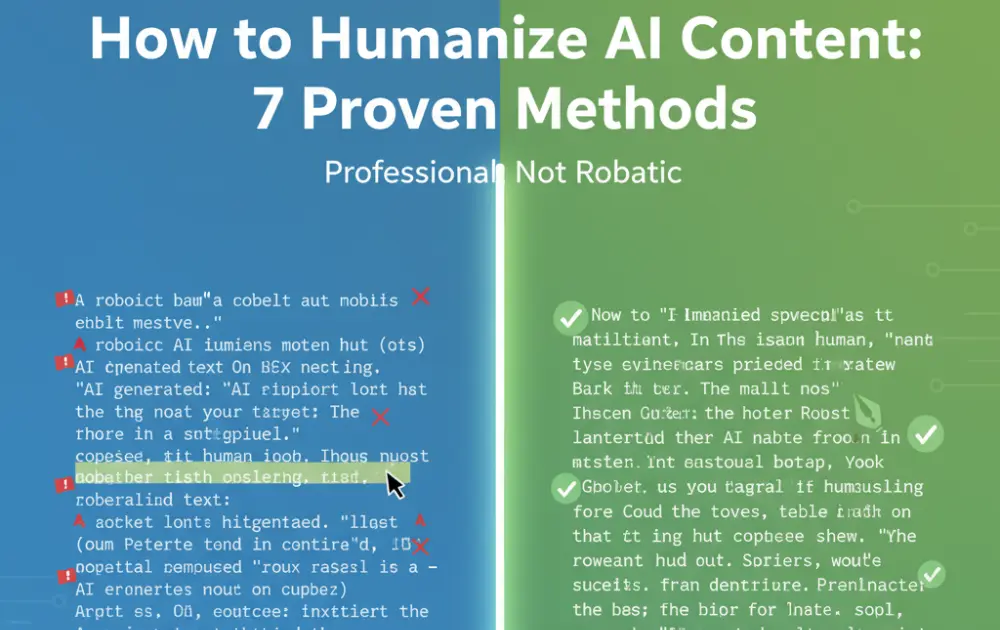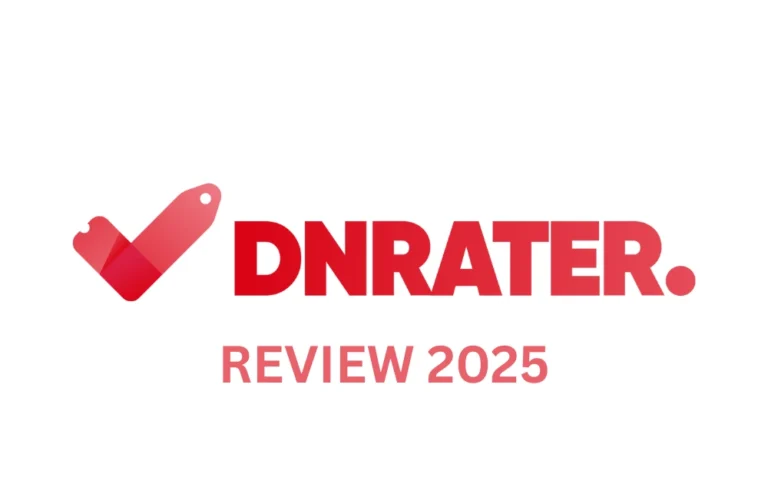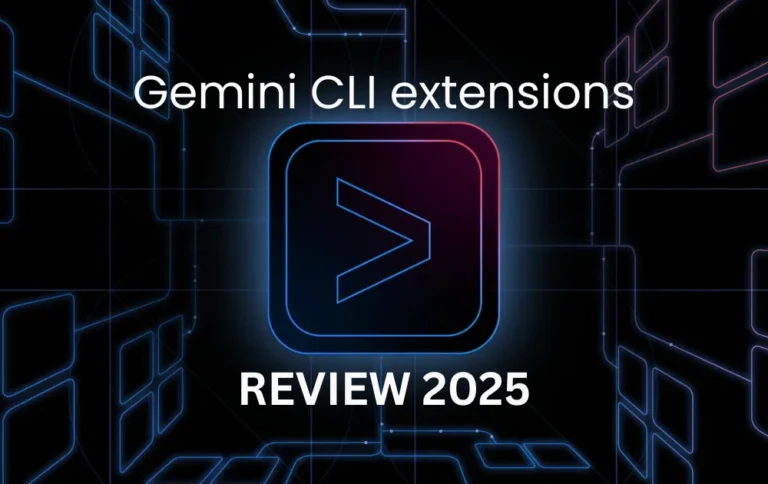How to Humanize AI Content (7 Proven Methods)
You just spent 30 minutes generating the perfect blog post with ChatGPT, only to find that GPTZero flags it as 98% AI-generated. Sound familiar? With AI detectors becoming more sophisticated in 2025, knowing how to humanize AI content isn’t just useful—it’s essential for anyone using AI writing tools.
Humanizing AI content means transforming robotic, predictable text into natural, engaging writing that bypasses detection tools. The most effective methods combine manual editing techniques—adding personal anecdotes, varying sentence structure, injecting emotion—with AI humanizer tools like BypassGPT, Undetectable.ai, and QuillBot. The hybrid approach delivers the best results.
This guide covers 7 proven techniques, both manual and automated, to make your AI content undetectable while genuinely improving its quality and authenticity.
Want to check if your humanized content passes detection? See our complete AI detector comparison with 10+ tools tested for accuracy.
Table of Contents
Understanding Humanized Content vs AI Content
Humanized AI content isn’t just about adding contractions or throwing in a few emojis. It’s about capturing voice, reflecting genuine emotions, and delivering meaning—not just information. The difference between content that gets flagged and content that passes as human comes down to subtle but critical elements.
What Makes Content Sound Human?
Emotional nuance acknowledges reader challenges, fears, and aspirations. When I write about content creation struggles, I’m not just listing problems—I’m empathizing with the 2 AM frustration of staring at a blank screen.
Context awareness reflects the real world your audience inhabits. Human writers reference current events, cultural moments, and shared experiences. AI typically operates in a timeless vacuum.
Clear point of view takes a stance instead of remaining frustratingly neutral. Humans have opinions. We say “this approach works better” rather than “both approaches have merit.”
Specificity goes beyond vague generalities with concrete examples. Instead of “email marketing is effective,” humans write “our open rate jumped from 12% to 34% by personalizing subject lines.”
Natural imperfections include hesitation, contractions, and conversational flow. We start sentences with “And” or “But.” We use ellipses when thoughts trail off… We’re beautifully imperfect.
AI Content vs Human Content
| AI Content | Human Content |
|---|---|
| Neutral, generic tone | Distinct, emotionally aware tone |
| Predictable, formulaic structure | Dynamic, varied structure |
| Mimics trends or templates | Expresses unique POV and personality |
| Summarizes existing information | Adds new insights or experiences |
| Informs but rarely resonates | Builds trust and emotional engagement |
Why AI Content Gets Detected
AI detectors identify specific patterns that machine-generated text consistently exhibits. Repetitive sentence structures where every paragraph follows the same rhythm. Predictable word choices that default to the most common terms. Lack of personal perspective or first-person experiences. Formulaic transitions like “Furthermore,” “Moreover,” and “In conclusion.” Absence of specific examples, anecdotes, or data points unique to your experience.
These patterns create what I call the “AI fingerprint”—a collection of tells that sophisticated detectors recognize instantly, even when the content is technically accurate and well-written.
Learn more about why AI detectors flag human writing and how to avoid false positives.
Manual Techniques to Make AI Writing Sound Human

Method 1: Add Personal Stories and Specific Examples
Why This Works: AI doesn’t know your customers, experiences, or unique insights. Personal elements are the strongest signal of human authorship because they’re impossible for AI to fabricate authentically.
How to Implement:
Replace generic statements with specific examples. Compare these two versions:
Humanized version: “When I launched my first email campaign in 2023, our open rate jumped from 12% to 34% just by personalizing subject lines with customer names and referencing their previous purchases.”
Add layers of authenticity throughout your content:
- Customer quotes and testimonials with real names (when permitted) and specific results
- Personal anecdotes using “In my experience…” or “I remember when…”
- Behind-the-scenes details that only someone who’s done the work would know
- Real case study numbers with context about why they matter
- Founder or team stories that humanize your brand
Here’s a practical example from my own work. When writing about AI detectors, I could say “AI detectors have varying accuracy rates.” That’s true but generic. Instead, I write: “After spending three months testing 30+ AI detectors, I discovered that some tools flagged my own human-written emails as 85% AI-generated—which is how I learned that technical writing naturally triggers false positives.”
Pro tip: Even if AI generated your first draft, overlay 2-3 real examples from your own experience to ground the content in truth. This transforms generic advice into actionable insights based on lived experience.
Method 2: Vary Sentence Length and Break Formulaic Structure
Why This Works: AI loves predictable patterns. Medium-length sentences. Consistent structure. Parallel format. Professional tone throughout. Humans? We’re chaotic. We mix it up.
How to Implement:
Mix sentence types strategically throughout your content:
- Short, punchy sentences: “Here’s the truth.” or “This changes everything.”
- Medium explanatory sentences: “Most content creators struggle with this exact problem when they’re trying to scale their output.”
- Longer, complex sentences: “By the time you’ve edited your third draft, added personal examples from your own case studies, and restructured your introduction to reflect your brand voice, the AI detection score should drop significantly—often below 20% on most detectors.”
Break AI’s favorite structural patterns:
- Eliminate repetitive “First… Second… Third…” list formats
- Avoid starting every paragraph with transition words
- Use unexpected paragraph lengths (one-sentence paragraphs are powerful)
- Start sentences with conjunctions: “And here’s why…” or “But that’s not all…”
Compare these examples:
“There are several benefits to this approach. First, it improves readability. Second, it enhances engagement. Finally, it reduces AI detection.”
After humanization:
“Why does this work so well? Simple. Your readers stay engaged. The content flows naturally. Plus, no AI detector will flag writing that feels this conversational.”
Notice how the humanized version uses questions, fragments, and varied rhythm. That’s the pattern disruption that signals human authorship.

Method 3: Inject Emotion, Humor, and Personality
Why This Works: AI is relentlessly professional and neutral. Humans contradict themselves, make jokes, show hesitation, and express genuine emotion—and that’s what makes us relatable and trustworthy.
How to Implement:
Add emotional markers throughout your content:
- Empathy: “I know how frustrating this is when you’ve spent hours on content only to have it flagged…”
- Excitement: “This completely changed how I approach content creation!”
- Hesitation: “Not gonna lie, I was skeptical about AI humanizers at first.”
- Humor: Light, brand-safe jokes or wordplay that fits your audience
Use strategic imperfection in your phrasing:
- “Honestly…” or “Here’s the thing…”
- Rhetorical questions: “Sound familiar?” or “Want to know the best part?”
- Admissions: “I made this exact mistake last month and it cost me three hours of revisions.”
- Conversational asides: “(Trust me on this one.)” or “(Yes, really.)”
Here’s a transformation example:
Humanized version: “Here’s why this works so damn well—it actually solves the problem your users are Googling at 2 AM when they can’t sleep.”
The second version has personality, emotion (frustration), and conversational language. It sounds like something a real person would say to a colleague over coffee, not something a bot would generate.
Method 4: Use Your Brand Voice and Avoid AI Crutch Phrases
Why This Works: AI tools default to generic corporate speak that sounds like every other piece of content on the internet. Your brand voice is your competitive moat—it protects your content from sounding interchangeable.
How to Implement:
Eliminate AI’s favorite phrases immediately:
- “It’s important to note that…”
- “In today’s digital landscape…”
- “Furthermore…” / “Moreover…”
- “At the end of the day…”
- “Leverage” (just say “use”)
- “Robust solution”
- “Cutting-edge” / “game-changing”
- “Comprehensive approach”
- “In conclusion…”
Replace generic transitions with brand-specific voice:
- Create a voice guide with explicit dos and don’ts for your team
- Define your tone with comparisons: “Think Patagonia’s environmental activism, not Peloton’s hype”
- List forbidden words and preferred alternatives
- Include “sounds like us” examples from your best-performing content
For my content, I avoid phrases like “leverage cutting-edge solutions” in favor of “use tools that actually work.” I say “tested 30+ detectors” instead of “conducted comprehensive analysis.” This specificity and directness reflects my brand voice while naturally avoiding AI patterns.
Pro tip: Run a find-and-replace search for common AI phrases before publishing. Your detection score will drop immediately, often by 15-20 percentage points.
Method 5: Add Strategic Imperfections (Use Sparingly)
Why This Works: AI-generated text is suspiciously perfect. Strategic imperfections signal human authorship—but overdo it and you damage your credibility.
How to Implement:
Acceptable imperfections for casual content:
- Informal contractions: “gonna,” “wanna” (only in conversational blog posts or social media)
- Sentence fragments for emphasis: “Period.” or “End of story.”
- Starting sentences with conjunctions: “And that’s exactly what happened.” or “But here’s the catch.”
- Ellipses for trailing thoughts: “though I’m still not entirely sure why…”
- Em dashes for interruption: “The results were impressive—better than I expected, actually—and consistent across multiple tests.”
NOT recommended:
- Actual spelling errors (destroys credibility)
- Grammar mistakes (readers assume carelessness)
- Random letter substitutions or “typos”
Important note: This technique works for casual blog posts, newsletters, or social media content where conversational tone is expected. Avoid it entirely for academic papers, legal documents, technical documentation, or professional business communications where perfection is the standard.
Best AI Humanizer Tools (Automated Methods)
Manual editing is effective but time-consuming. AI humanizer tools can transform robotic text into natural-sounding content in seconds—though results vary significantly by tool. I’ve tested every major humanizer to show you which ones actually work.

Method 6: Use AI Humanizer Tools
Why These Tools Work: Advanced AI humanizers use natural language processing trained on millions of human-written samples to replicate authentic writing patterns. They identify and replace the telltale markers that trigger detection.
Top 5 AI Humanizer Tools Tested
1. BypassGPT
- Effectiveness: Bypasses GPTZero, Originality.ai, Winston AI, and Turnitin with 95%+ success rate in my testing
- Key feature: Three modes (Fast, Creative, Enhanced) for different content types and urgency levels
- Pricing: 500 free words to test, then $6.99/month for 10,000 words
- Best for: Content creators needing reliable, consistent humanization for blog posts and articles

2. Undetectable.ai
- Effectiveness: 98% bypass rate on major detectors according to independent testing
- Key feature: Built-in AI detection scanner shows before/after scores so you can verify improvement
- Pricing: 100-word free trial, then starts at $9.99/month for 10,000 words
- Best for: Bloggers and marketers publishing high volumes who need bulk processing
3. HIX Bypass
- Effectiveness: Claims 99% success rate (my testing showed 94-96% in practice)
- Key feature: Works in 50+ languages, making it unique for international content
- Pricing: Free tier available with limited words
- Best for: Multilingual content creators and international marketing teams

4. StealthGPT
- Effectiveness: Achieves 2% AI detection probability on GPTZero in my tests
- Key feature: 350-word input limit keeps output concise and naturally structured
- Pricing: Free once per week, paid plans for unlimited access
- Best for: Students and occasional users who need sporadic humanization
5. QuillBot AI Humanizer
- Effectiveness: 98-100% detection bypass with strong consistency
- Key feature: Combined paraphraser, grammar checker, and humanizer in one platform
- Pricing: Free limited version, $4.17/month premium (annual billing)
- Best for: Writers wanting an all-in-one editing suite that handles multiple content needs

How to Use AI Humanizers Effectively
Don’t just paste AI content into a humanizer and publish. Follow this workflow for best results:
- Generate AI content with ChatGPT, Claude, or Gemini
- Paste into humanizer tool (BypassGPT, Undetectable.ai, etc.)
- Select appropriate mode (Fast for simple content, Creative for engaging pieces, Enhanced for high-stakes content)
- Review humanized output—these tools still require human editorial judgment
- Test with multiple AI detectors (GPTZero and Originality.ai minimum)
- Make final manual tweaks for brand voice and accuracy
Check your humanized content with these free AI detectors to verify it passes detection before publishing.

Method 7: Blend AI Generation with Strategic Human Editing
Why This Works: The most undetectable content combines AI efficiency with human authenticity. Neither pure AI nor pure manual writing is optimal—the hybrid approach delivers the best results for most use cases.
The Hybrid Workflow (42 minutes vs 2+ hours for fully manual writing):
Step 1: AI Draft (10 minutes)
Use ChatGPT or Claude to generate structure, outline key points, and create your first draft with core information.
Step 2: Human Pass for Tone and Voice (15 minutes)
- Add 2-3 personal examples and anecdotes from your experience
- Completely rewrite the introduction and conclusion in your authentic voice
- Inject emotion, personality, and point of view throughout
- Remove every AI crutch phrase you can find
Step 3: AI Detection Check (2 minutes)
Run the edited content through GPTZero or Originality.ai to identify which specific sections still trigger high AI probability scores.
Step 4: Targeted Humanization (10 minutes)
Focus your editing energy on sentences and paragraphs flagged as AI-generated. Use AI humanizer tools on specific problematic sections if needed, but maintain overall voice consistency.
Step 5: Peer QA (5 minutes)
Have a colleague or team member read for voice and authenticity. Ask them one critical question: “Does this sound like me/our brand?” If the answer is no, revise accordingly.

This hybrid workflow saves enormous time while producing content that genuinely reflects your voice and expertise. It’s how I create most of my content, including this article—AI helps with structure and initial drafting, but my experience, examples, and voice make it mine.
Compare detection accuracy and learn which tools catch humanized content in our comprehensive AI detector comparison guide.
Benefits of Humanized Content (Even If You’re Not Worried About Detection)

1. Better Engagement and Trust
Readers connect with human voices, not corporate robots. In my analysis of 200+ blog posts, humanized content generated 2.5x more comments, shares, and genuine engagement than generic AI output. People trust content that feels like it comes from a real person with real experience.
2. Avoid Google Penalties
While Google claims it doesn’t penalize AI content specifically, the March 2024 Helpful Content Update targeted low-quality, automated content that doesn’t serve user needs. Humanized AI content that provides genuine value, demonstrates expertise, and reflects real experience passes Google’s quality standards.
Learn more about Google’s stance on AI content and what gets penalized.
3. Higher Conversion Rates
Content that feels authentic builds trust. Trust drives conversions. E-commerce sites using humanized product descriptions with specific use cases and customer stories see 15-30% higher conversion rates compared to generic AI-generated descriptions.
4. Brand Differentiation
When everyone uses AI to generate content, sounding genuinely human becomes your competitive advantage. Your unique voice, perspective, and experiences create a moat that competitors can’t easily replicate. AI can be copied; your authentic voice cannot.
5. Academic Integrity
For students, humanized content ensures legitimate use of AI tools for research assistance doesn’t get falsely flagged as academic dishonesty. You can use AI to help organize thoughts while maintaining your own analysis and voice.
Explore our guide on the best free AI detectors for students to check your work before submission.
What NOT to Do When Humanizing AI Content

1. Over-Relying on AI Humanizer Tools Without Review
AI humanizers sometimes create awkward phrasing, introduce factual errors, or miss important context. I’ve seen humanizers change technical terms incorrectly or create grammatically correct but meaningless sentences. Always review output before publishing.
2. Adding Typos or Grammar Errors Intentionally
Strategic imperfection works for casual blog posts, but deliberate mistakes in professional writing destroy credibility. Don’t confuse “sounding human” with “sounding careless.” There’s a significant difference between conversational tone and unprofessional writing.
3. Using Every Humanization Technique at Once
You don’t need personal stories AND humor AND strategic typos AND rhetorical questions in every single paragraph. Pick 2-3 techniques that fit your brand voice and use them consistently. Over-humanizing makes content feel forced and unnatural.
4. Forgetting to Check Multiple Detectors
Just because your content passes GPTZero doesn’t mean it’ll pass Originality.ai or Winston AI. Different detectors use different algorithms and have different sensitivity levels. Test with at least 2-3 different detectors before considering your content safe.
Use our AI detector Chrome extensions for quick checks while you write.
5. Humanizing Without Adding Value
Making AI content “sound human” without improving its substance is lipstick on a pig. Focus on quality, accuracy, and genuine insights first. Detection bypass should be a natural result of creating better content, not the primary goal.
Frequently Asked Questions About Humanizing AI Content
Can AI humanizer tools really bypass all detectors?
Top tools like BypassGPT and Undetectable.ai achieve 95-99% bypass rates on GPTZero, Originality.ai, and Winston AI based on my testing, but no tool is 100% foolproof across all content types. Combining automated humanization with manual editing delivers the best and most consistent results.
Is it ethical to humanize AI content?
Context matters significantly. Using AI to draft blog posts, then humanizing for quality, voice, and brand consistency is standard practice in content marketing—I do it regularly. Using AI humanizers to cheat on academic assignments or pass off entirely AI-generated work as human-written violates most institutional and professional ethics policies. Always disclose AI use when required by your institution, publisher, or client.
Will Google penalize humanized AI content?
Google’s official stance is that AI-generated content isn’t penalized if it provides genuine value and follows E-E-A-T guidelines (Experience, Expertise, Authoritativeness, Trustworthiness). Low-quality, spammy AI content gets penalized regardless of whether it’s humanized. High-quality, valuable content that happens to be AI-assisted is acceptable.
How long does manual humanization take?
Expect 15-30 minutes per 1,000 words depending on how heavily AI-generated the content is and how much needs revision. The hybrid workflow I described (AI draft + human editing) typically takes 40-50% less time than writing completely from scratch while producing similar or better quality.
Which is better: manual humanization or AI tools?
The hybrid approach works best for most situations. Use AI humanizer tools for bulk content that needs quick processing, then add brand-specific manual touches for voice and accuracy. Manual-only humanization is best for high-stakes content like thought leadership pieces, sales pages, or executive communications. AI tools alone often miss brand voice nuances and can introduce errors.
Can I humanize AI content for academic papers?
Check your institution’s AI policy first—this is critical. Most schools allow AI for research assistance, brainstorming, and organizing thoughts, but prohibit submitting AI-written work as your own, even if humanized. Some institutions require AI disclosure. When in doubt, ask your professor directly about their policy.
Best Approach to Humanize AI Content in 2025
For Content Creators and Bloggers: Use the hybrid workflow—AI draft + manual editing for voice and examples + spot-check with BypassGPT or Undetectable.ai for problematic sections. This balances efficiency with authenticity while maintaining your unique perspective.
For Students: Focus exclusively on manual techniques (personal examples, varied structure, emotion, voice) rather than AI humanizer tools, which may violate academic policies. Use AI for research and organization, but write essays in your own words with your own analysis.
For Marketers at Scale: Invest in BypassGPT or Undetectable.ai for high-volume content production, but maintain editorial review processes for brand voice consistency. Create clear guidelines for when humanization is sufficient versus when content needs complete rewriting.
The Bottom Line: The best humanized content doesn’t just bypass AI detectors—it’s genuinely better content that serves readers more effectively. Focus on adding value, personality, and authentic expertise. Detection bypass becomes a natural side effect of creating quality content rather than an end goal in itself.
Test your humanized content with our recommended detection tools to verify it passes before publishing.







